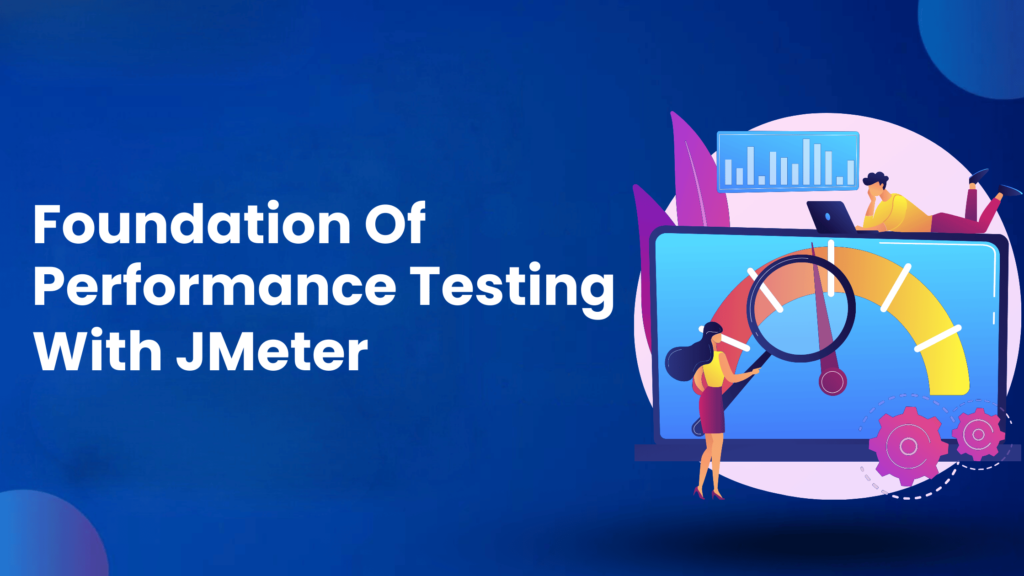Description
Introduction:
The course “Performance Testing with JMeter: Ensuring Web Application Scalability” is designed to provide participants with an in-depth understanding of performance testing and the tools required to ensure web application scalability. Apache JMeter is a powerful open-source tool used to measure the performance of web applications by simulating a variety of load scenarios.
This course covers the fundamentals of performance testing, setting up and using JMeter, building effective test plans, analyzing performance results, and identifying performance bottlenecks. The training is ideal for professionals looking to ensure their applications can handle increased traffic and scale efficiently, especially in high-demand environments. By the end of this course, participants will be proficient in creating, executing, and analyzing performance test cases using JMeter.
Prerequisites:
- Basic knowledge of web applications and their architecture.
- Familiarity with HTTP/HTTPS protocols and web development basics.
- No prior experience with JMeter is required, but having some experience with manual or functional testing is beneficial.
Table of Content:
1: Introduction to Performance Testing
1.1 What is Performance Testing?
1.2 Importance of Performance and Scalability in Web Applications
1.3 Types of Performance Testing: Load, Stress, Endurance, and Spike Testing
1.4 Introduction to JMeter as a Performance Testing Tool
2: Getting Started with Apache JMeter
2.1 Downloading and Installing JMeter
2.2 JMeter Architecture and Components
2.3 Overview of JMeter User Interface
2.4 Running Your First JMeter Test
3: Building Test Plans in JMeter
3.1 Introduction to JMeter Test Plans(Ref: Automation Testing with Selenium: From Basics to Advanced)
3.2 Thread Groups: Simulating Users and Load
3.3 Samplers: HTTP Requests, FTP Requests, and More
3.4 Configuring Listeners for Test Result Collection
3.5 Controllers: Logic Controllers and Flow Control
4: Advanced JMeter Elements
4.1 Configuring Timers, Assertions, and Pre/Post Processors
4.2 Using Regular Expressions for Dynamic Test Cases
4.3 Parameterization: Passing Data from Files and Variables
4.4 Handling Dynamic Web Pages with JMeter
5: Load Testing with JMeter
5.1 Simulating Real-World Traffic: User Ramp-Up, Think Time, and Looping
5.2 Designing Load Test Scenarios for Web Applications
5.3 Executing Load Tests and Monitoring Application Behavior
5.4 Identifying Performance Bottlenecks with JMeter
6: Stress Testing and Performance Metrics
6.1 Setting Up and Running Stress Tests
6.2 Interpreting Performance Metrics (Response Time, Throughput, Error Rate)
6.3 Analyzing Resource Utilization: CPU, Memory, and Network Usage
6.4 Benchmarking Application Performance under Stress
7: Distributed Testing with JMeter
7.1 Introduction to Distributed Load Testing
7.2 Setting Up JMeter in a Distributed Environment (Master-Slave Configuration)
7.3 Running Large-Scale Performance Tests with Multiple Machines
7.4 Best Practices for Distributed Load Testing
8: Analyzing and Reporting Test Results
8.1 Using JMeter Listeners for Result Collection
8.2 Analyzing Response Time, Latency, and Throughput
8.3 Generating HTML Reports for Performance Testing
8.4 Interpreting Test Results and Making Recommendations
9: JMeter Integration with Other Tools
9.1 Integrating JMeter with Jenkins for Continuous Integration
9.2 Using JMeter with Grafana and InfluxDB for Real-Time Monitoring
9.3 Combining JMeter with Other Testing Tools (Selenium for UI Testing)
10: Enhancing JMeter Test Plans
10.1 Working with APIs and Web Services in JMeter (SOAP, REST)
10.2 Handling Authentication (Basic, OAuth, Token-Based)
10.3 Load Testing Databases with JMeter
10.4 Performance Testing Mobile Applications with JMeter
11: Best Practices for Performance Testing
11.1 Designing Effective Test Scenarios
11.2 Setting Realistic Load and Performance Targets
11.3 Using Assertions and Timers for Accurate Measurements
11.4 Scaling Your Test Environment for Large-Scale Testing
12: Final Project and Case Study
12.1 Real-World Case Study: Performance Testing of a Web Application
12.2 Developing and Executing a Load and Stress Test Plan
12.3 Identifying Performance Issues and Bottlenecks
12.4 Presenting Findings and Performance Recommendations
Conclusion:
Performance testing is essential to ensure that web applications can scale under heavy user loads. By mastering JMeter for performance testing, teams can proactively address performance issues, optimize their applications, and deliver a smooth experience to users, regardless of traffic volume. This training will empower you to design efficient test plans, analyze test results, and leverage JMeter to enhance your web application’s scalability and performance.







Reviews
There are no reviews yet.